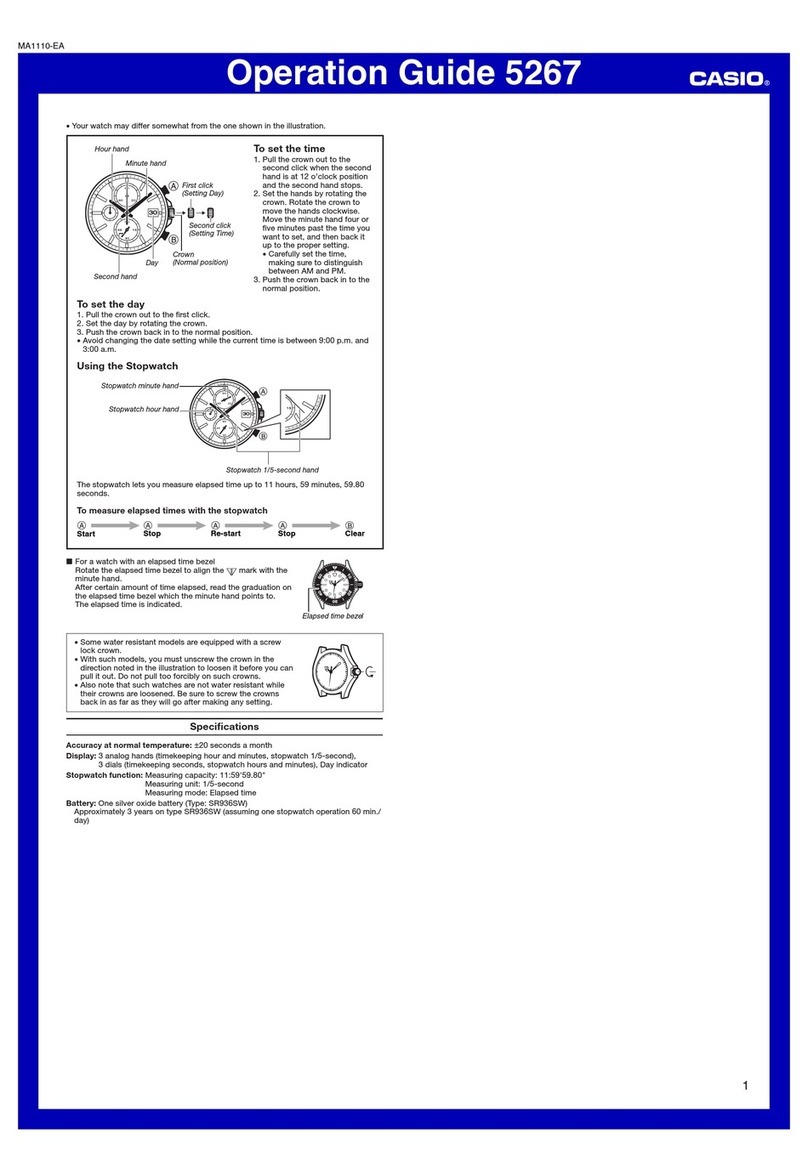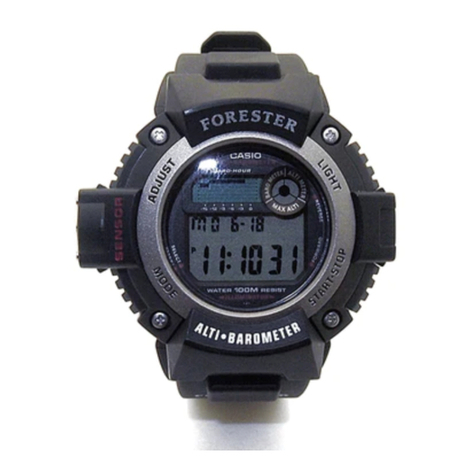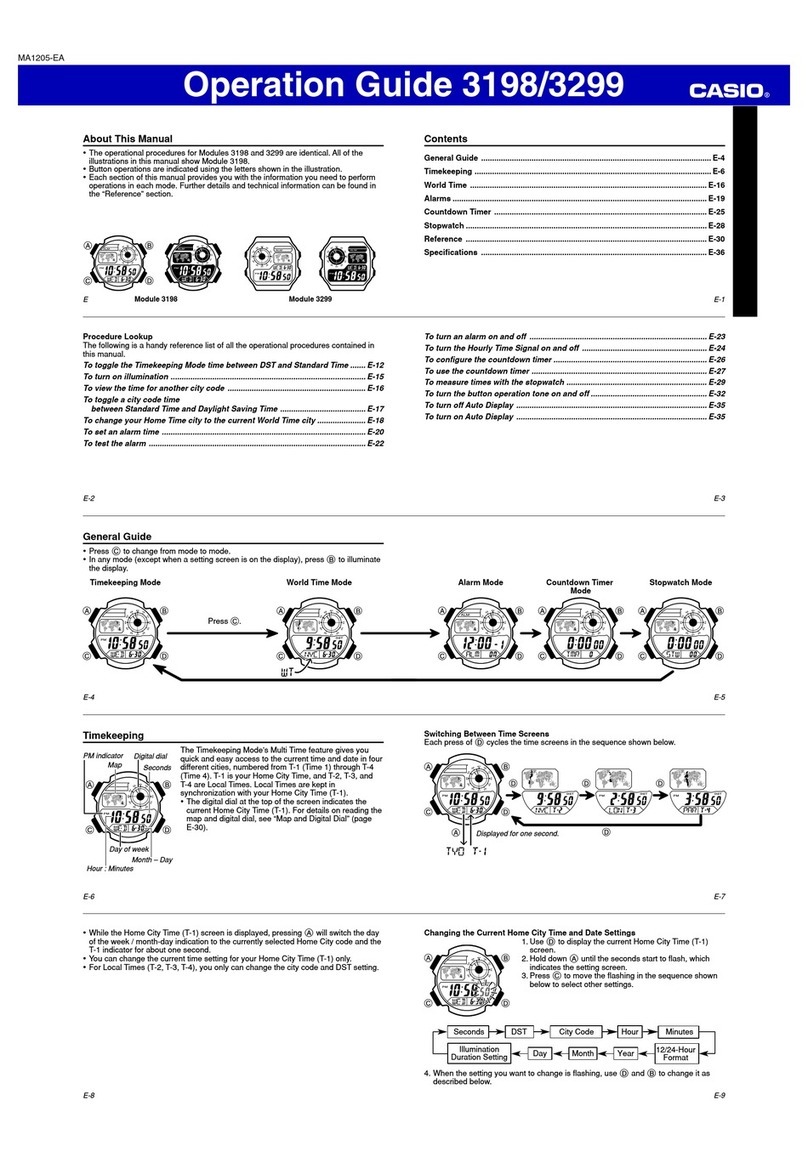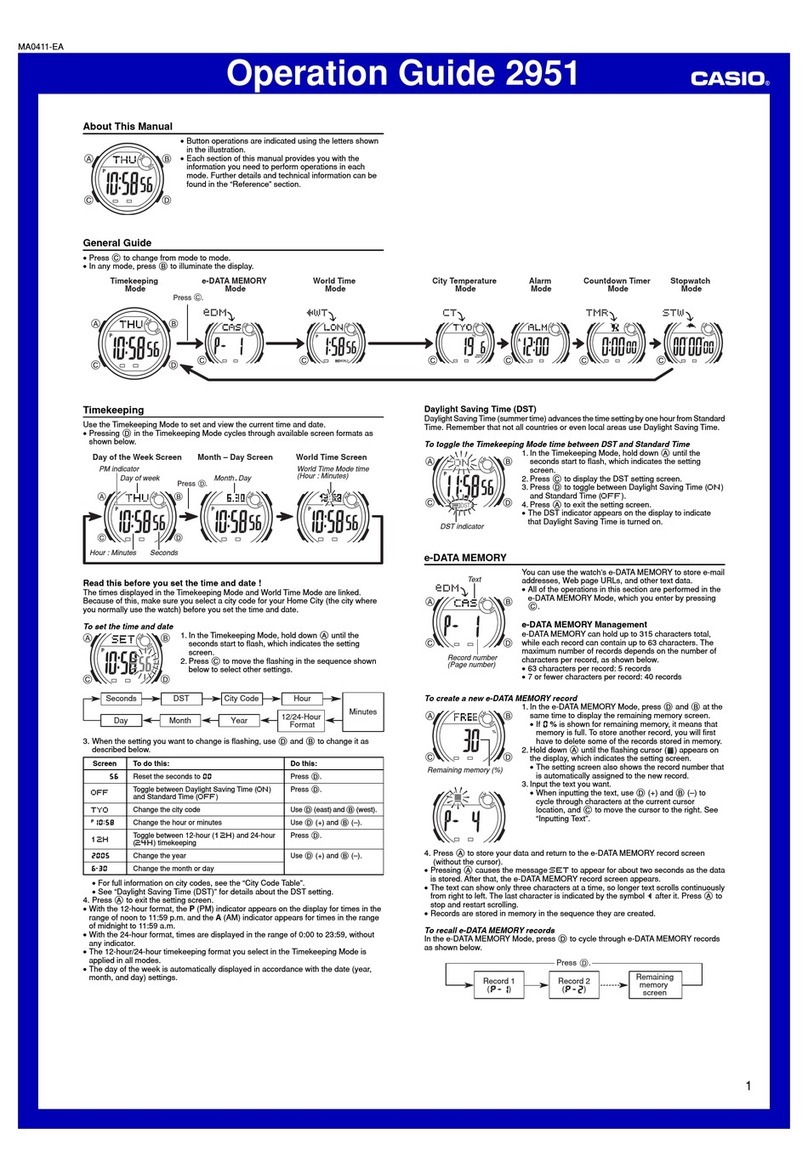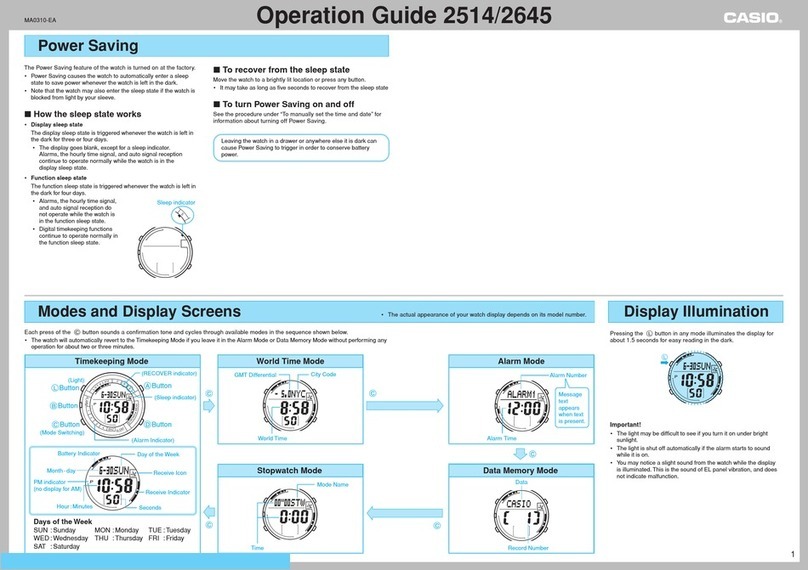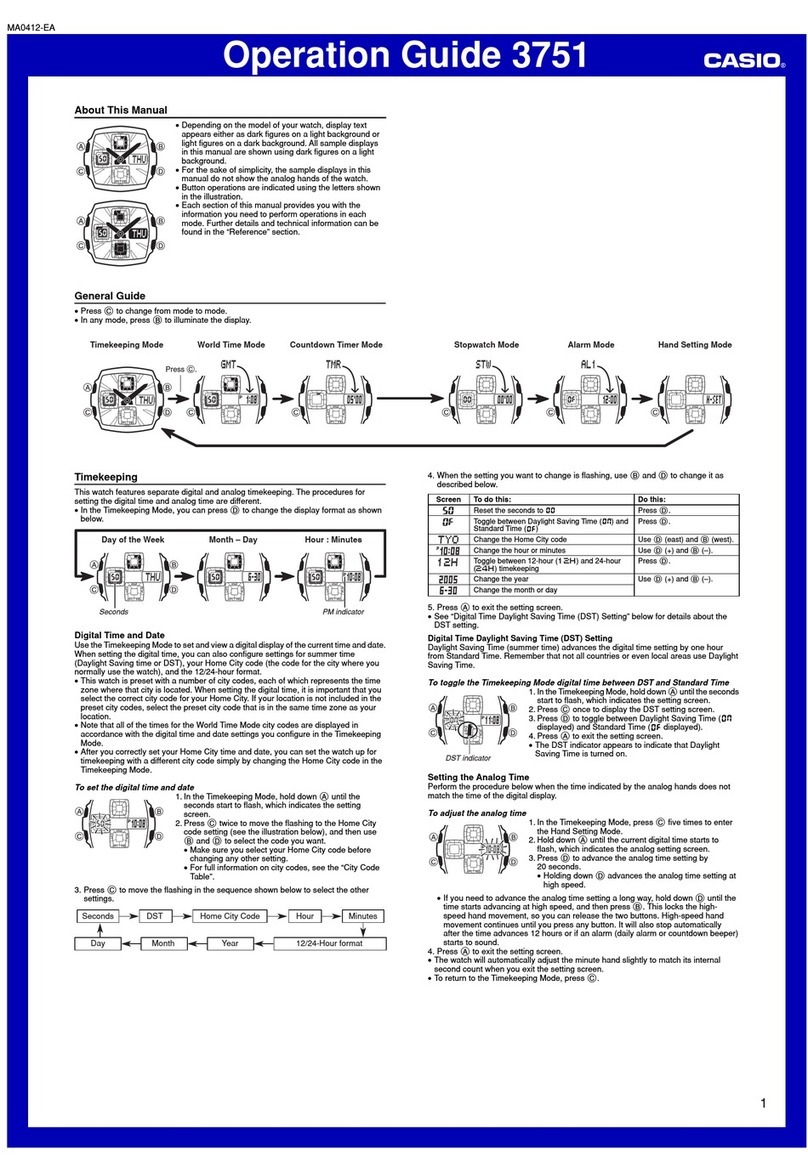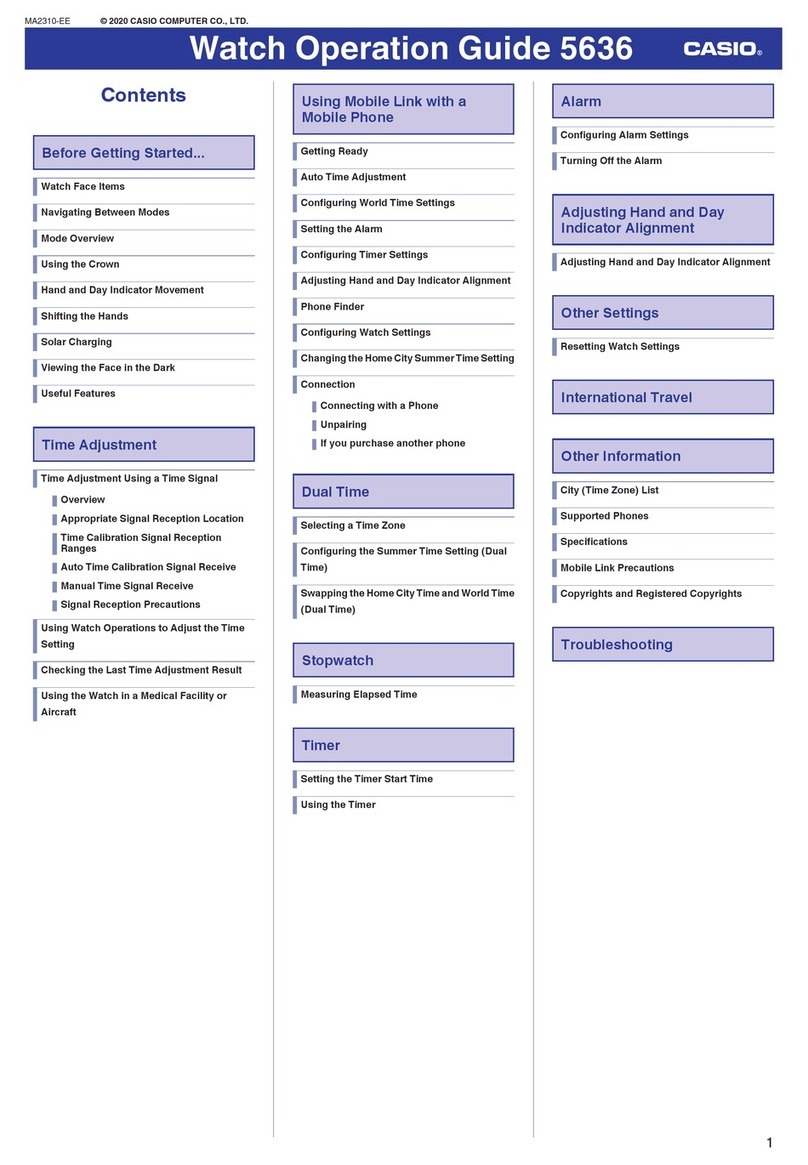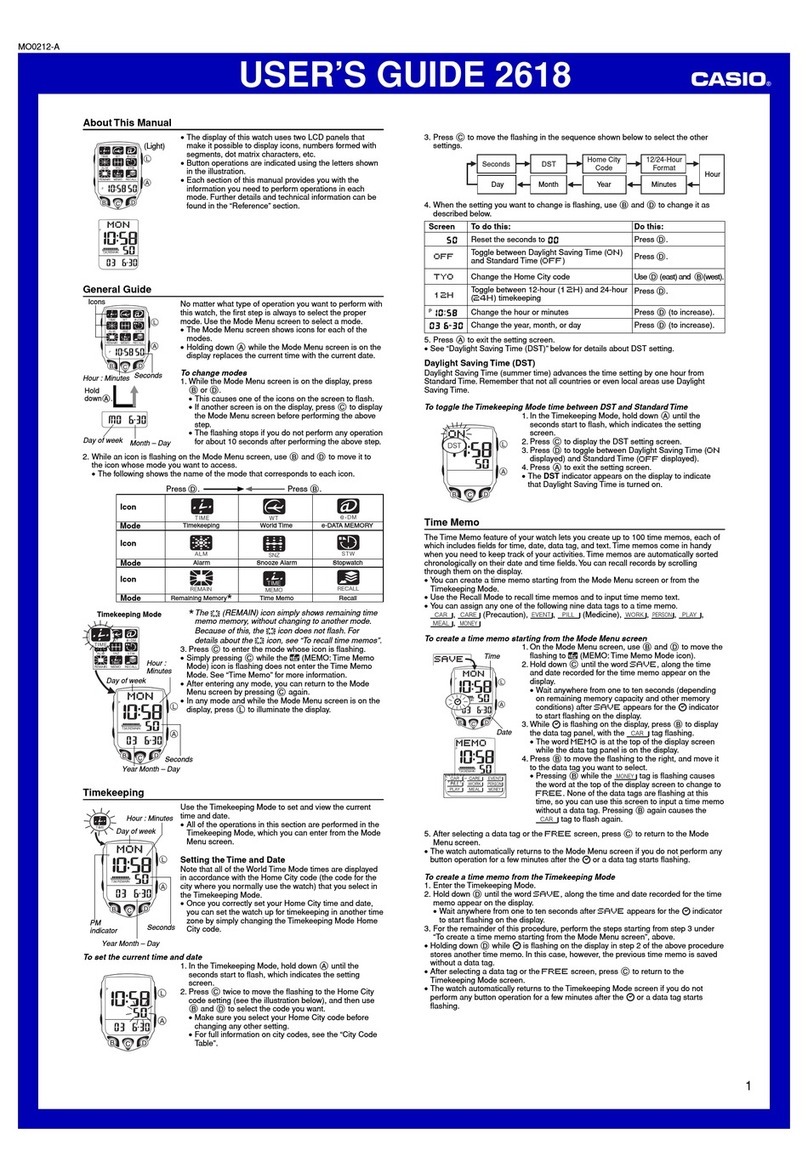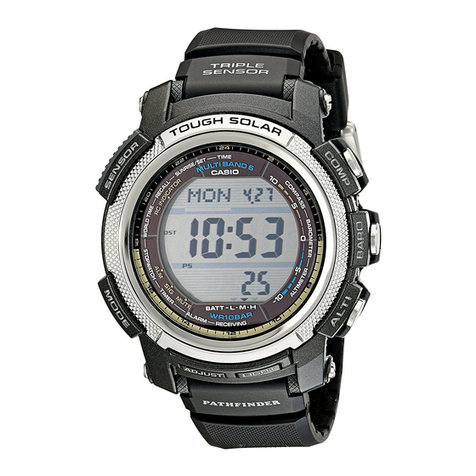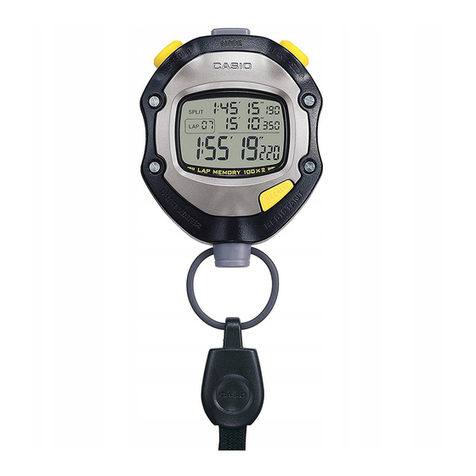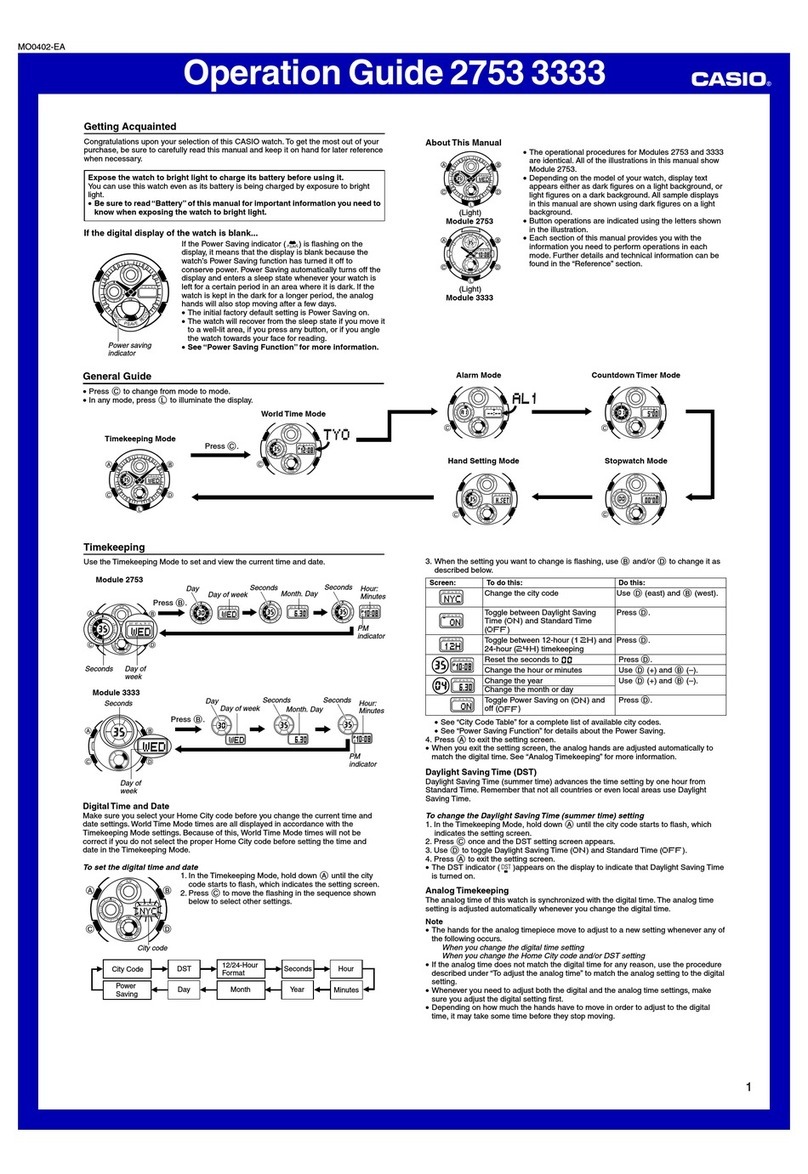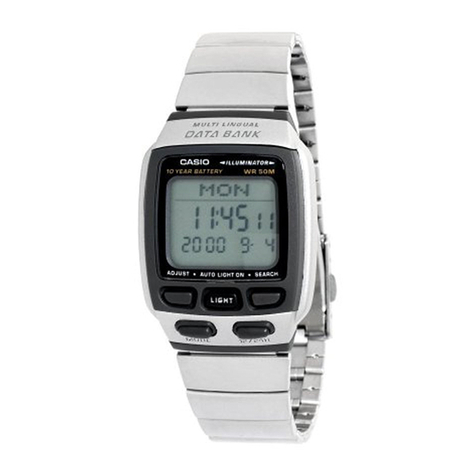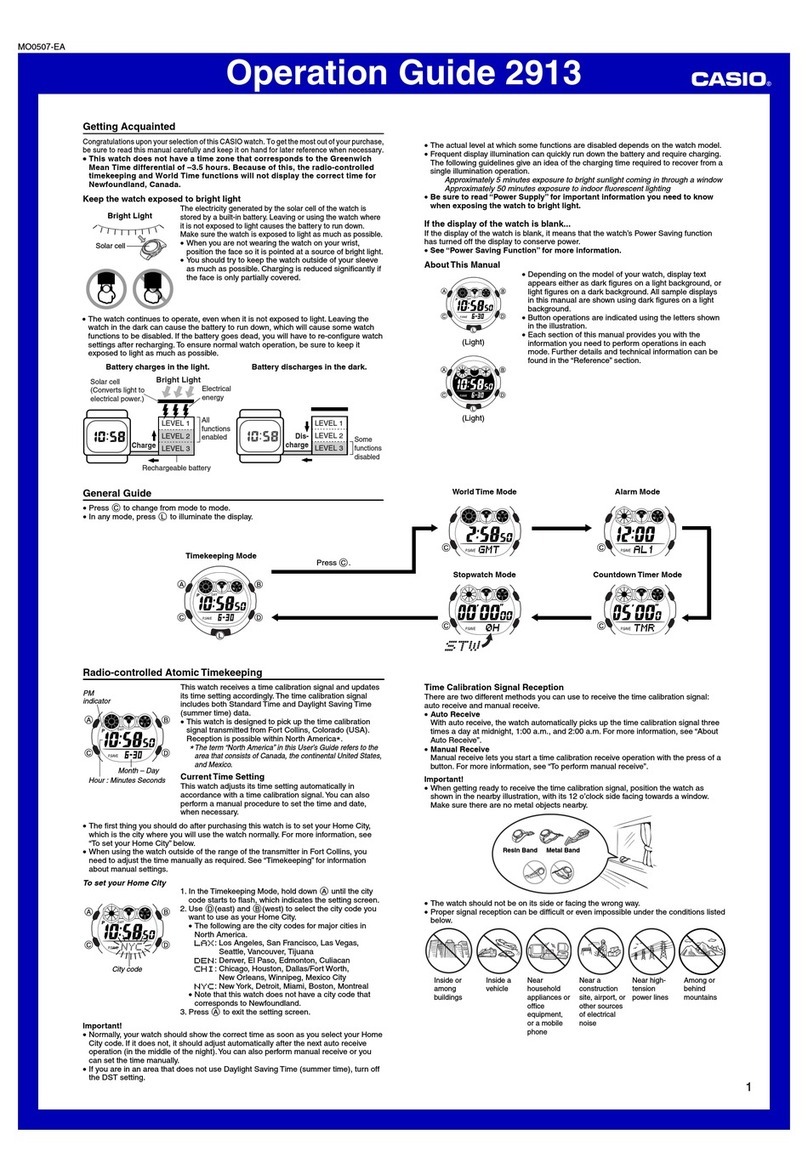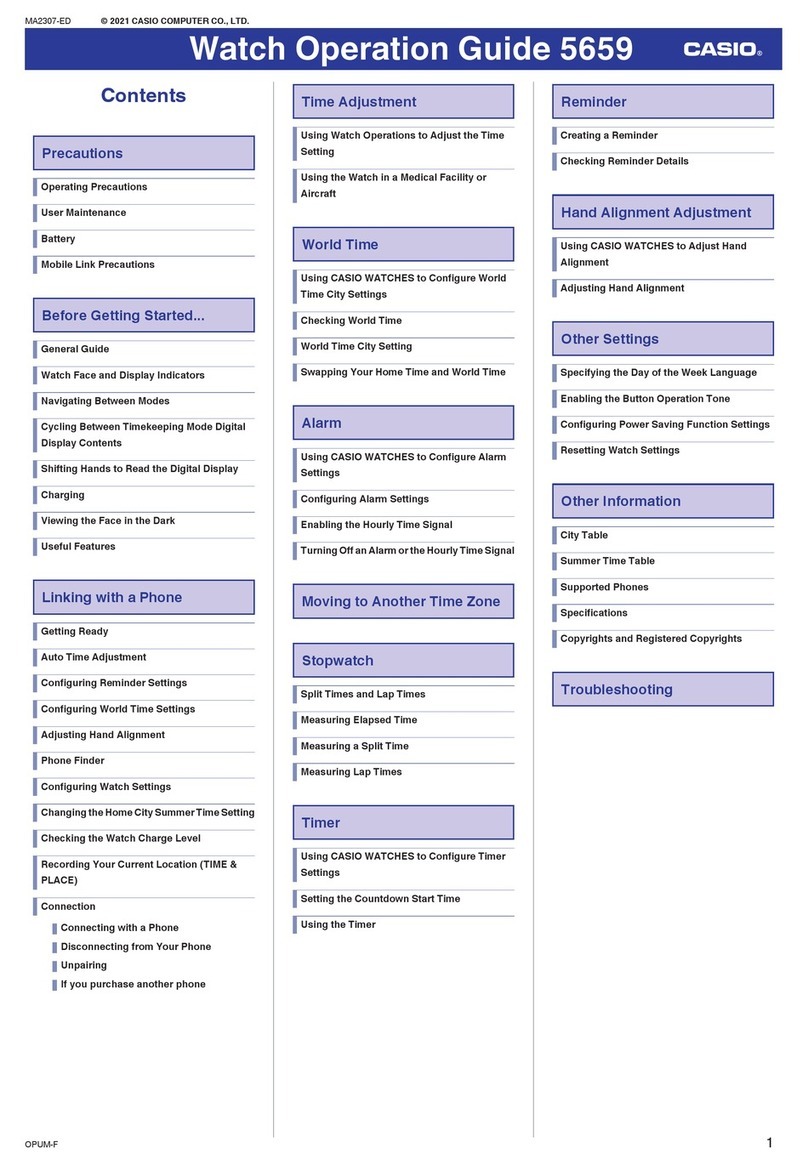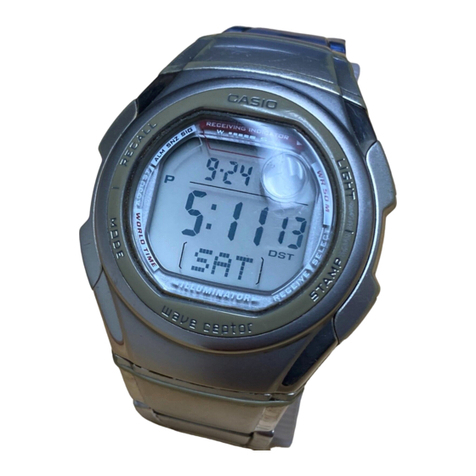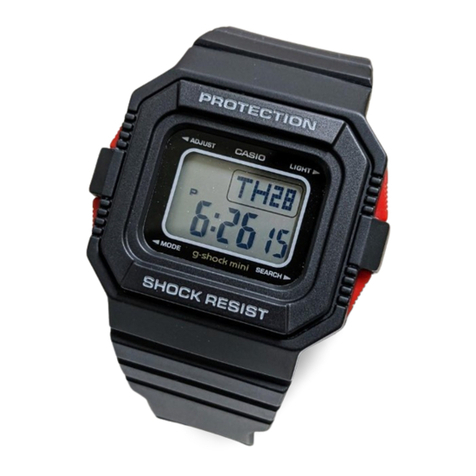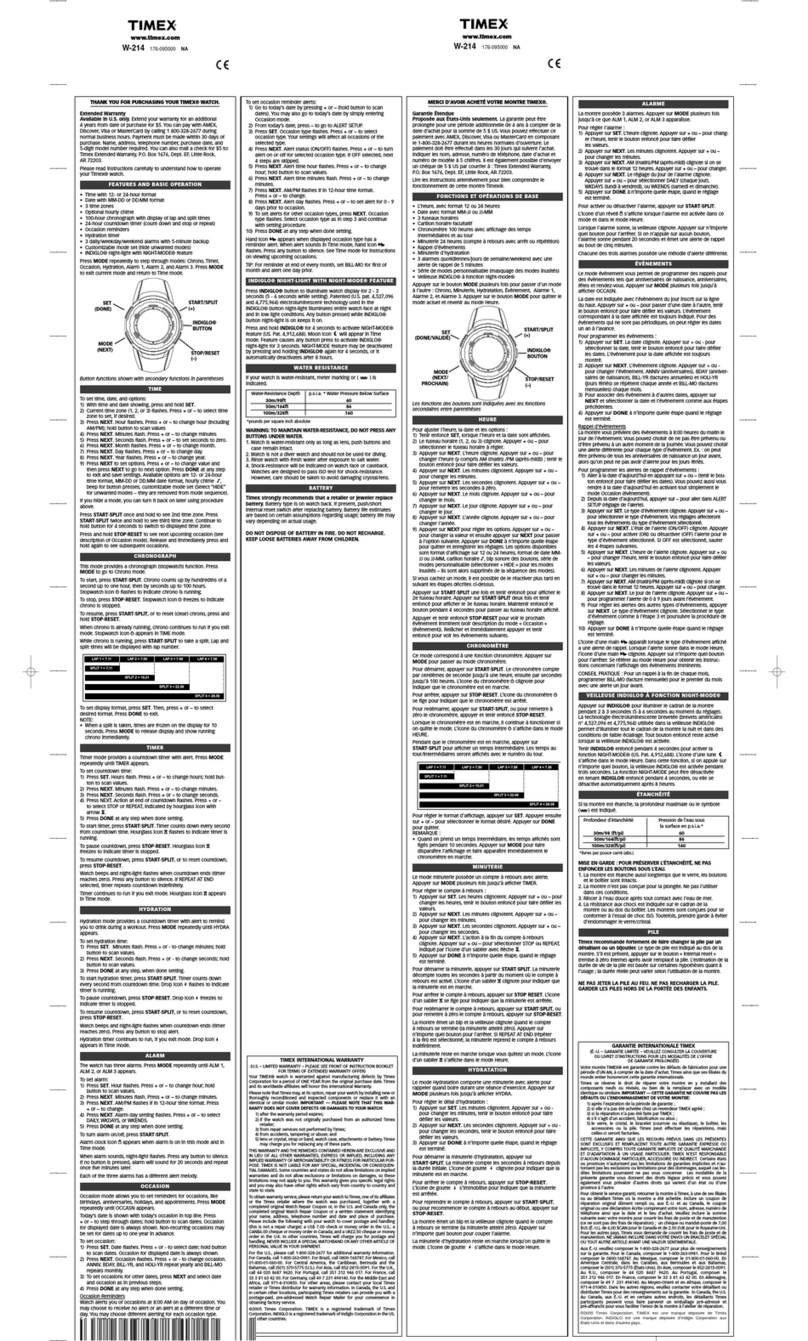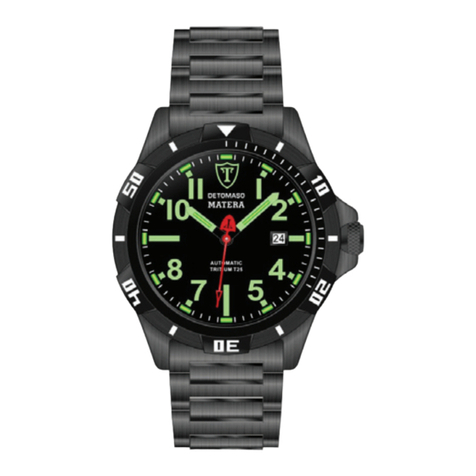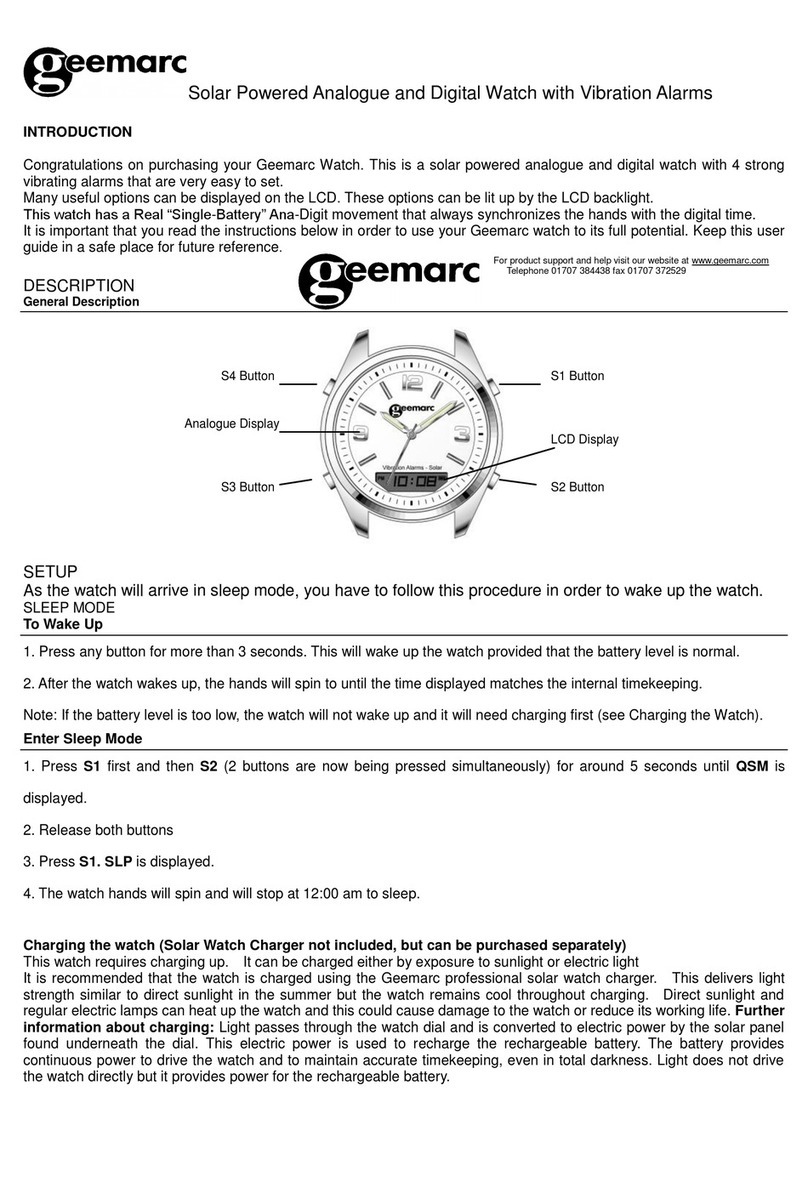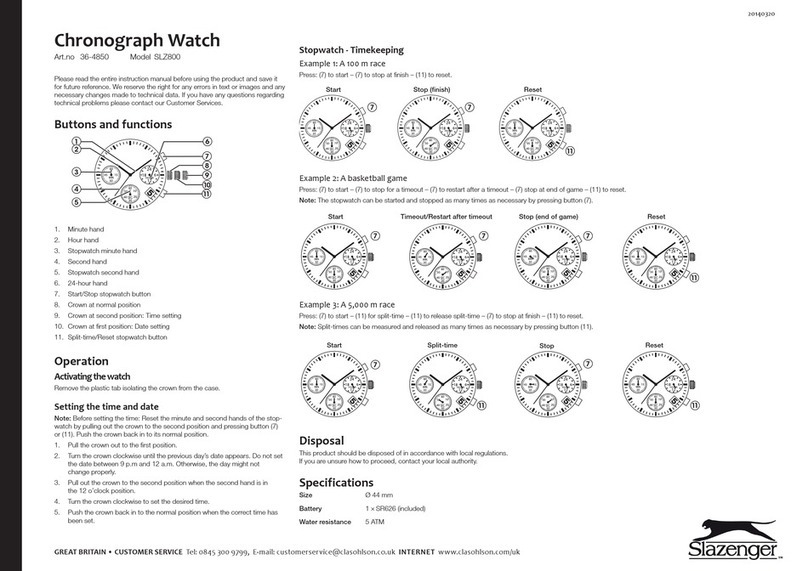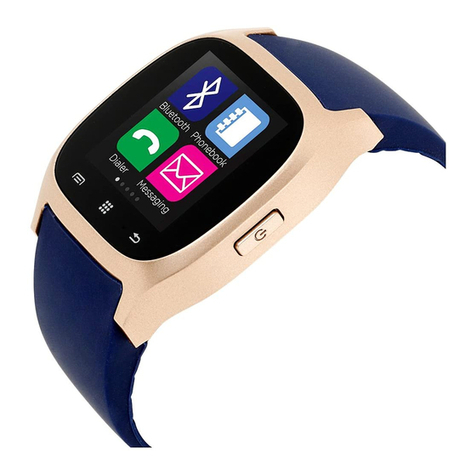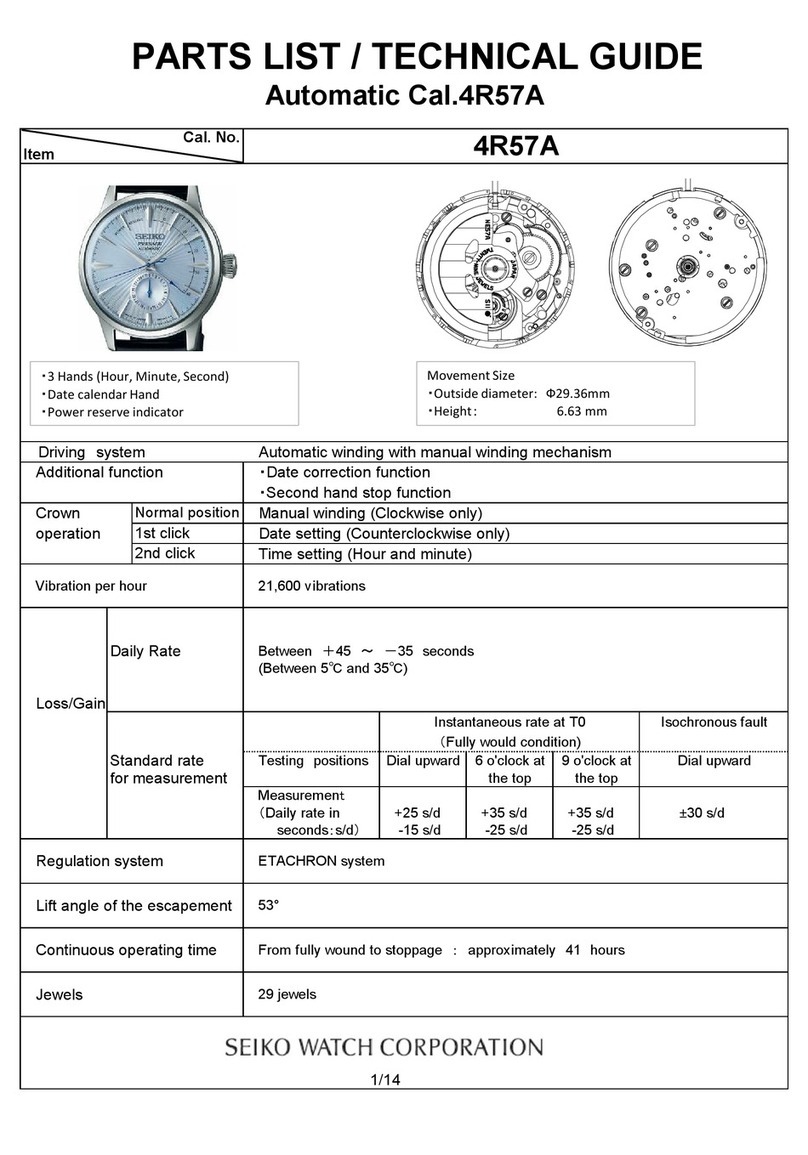
Operation Guide 2515
2
6. After you input the name, press Cas many times as necessary to move the cursor
to the number area.
•When the cursor is located at the eighth space of the name area, moving the
cursor to the right causes it to jump to the first digit of the number. When the
cursor is at the 15th digit of the number, moving it to the right (by pressing C)
causes it to jump to the first character in the name.
•Pressing Cmoves the cursor the right, while Bmoves it to the left.
7. In the number area, use Eand Dto cycle through numbers and symbols
(hyphen, brackets, space) at the cursor position.The characters cycle in the
sequence shown below.
8. When the character you want is at the cursor position, press Cto move the cursor
to the right.
9. Repeat steps 7 and 8 until you complete number input.
•You can input up to 15 digits for the number.
•The number initially contains all hyphens. You can leave the hyphens as they are
or replace them with numbers or other symbols (brackets, space).
10. Press Ato store your data and return to the Data Bank record screen (without
the cursor).
•When you press Ato store data, the name and number you input flash for about
one second as Data Bank records are sorted. After the sort operation is complete,
the Data Bank record screen appears.
•The name can show only three characters at a time, so longer text scrolls
continuously from right to left. The last character is indicated by the symbol after it.
To recall Data Bank records
In the Data Bank Mode, use E(+) and D(–) to scroll through Data Bank records on
the display.
•Pressing Ewhile the last Data Bank record is on the display or Dwhile the first
record is on the display displays the new data screen.
To edit a Data Bank record
1. In the Data Bank Mode, use E(+) and D(–) to scroll through the records and
display the one you want to edit.
2. Hold down Auntil the flashing cursor appears on the display.
3. Use C(right) and B(left) to move the flashing to the character you want to
change.
4. Use E(forward) and D(back) to change the character.
5. After making the changes that you want, press Ato store them and return to the
Data Bank record screen.
To delete a Data Bank record
1. In the Data Bank Mode, use E(+) and D(–) to scroll through the records and
display the one you want to delete.
2. Hold down Auntil the flashing cursor appears on the display.
3. Press Band Cat the same time to delete the record.
•The message CLR appears to indicate that the record is being deleted. After the
record is deleted, the cursor appears on the display, ready for input.
4. Input data or press Ato return to the Data Bank record screen.
Alarms
You can set up to five independent multi-function alarms
with hour, minutes, month, and day. When an alarm is
turned on, the alarm tone sounds when the alarm time is
reached. You can select either a one-time alarm or snooze
alarm that repeats up to seven times, every five minutes.
You can also turn on an Hourly Time Signal that causes
the watch to beep twice every hour on the hour.
•There are five alarms numbered1through 5.You can
configure Alarm1as a snooze alarm or a one-time-
alarm. Alarms 2through 5can be used as one-time
alarms only.
•Alarm settings (and Hourly Time Signal settings) are
available in the Alarm Mode, which you enter by
pressing B.
Alarm Types
The alarm type is determined by the settings you make, as described below.
•Daily alarm
Set the hour and minutes for the alarm time. This type of setting causes the alarm to
sound everyday at the time you set.
•Date alarm
Set the month, day, hour and minutes for the alarm time. This type of setting causes
the alarm to sound at the specific time, on the specific date you set.
•1-Month alarm
Set the month, hour and minutes for the alarm time. This type of setting causes the
alarm to sound everyday at the time you set, only during the month you set.
•Monthly alarm
Set the day, hour and minutes for the alarm time. This type of setting causes the alarm
to sound every month at the time you set, on the day you set.
To set an alarm time
1. In the Alarm Mode, use Eand Dto scroll through the
alarm screens until the one whose time you want to set
is displayed.
•Each of the five alarm screens has an alarm number.
The hourly time signal screen does not have an alarm
number.
2. After you select an alarm, hold down Auntil the hour
setting of the alarm time starts to flash, which indicates
the setting screen.
•This operation automatically turns on the alarm.
0to 9
x[ ] (space)
Press E.
Press D.
Alarm time
(Hour : Minutes)
Alarm number
Alarm date
(Month–Day)
Timekeeping
Mode time
Alarm number
Alarm1Alarm 2Alarm 3
Time
Signal Alarm 5Alarm 4
Press E. Press D.
3. Use Cand Bto move the flashing in the sequence shown below to select other
settings.
4. While a setting is flashing, use E(+) and D(–) to change it.
•To set an alarm that does not include a month (Daily alarm, Monthly alarm), set x
for the month. Use Eand Duntil the xmark appears (between 12 and 1) while
month setting is flashing.
•To set an alarm that does not include a day (Daily alarm, 1-Month alarm), set xx
for the day. Use Eand Duntil the xx mark appears (between the end of the
month and 1) while the day setting is flashing.
•When setting the alarm time using the 12-hour format, take care to set the time
correctly as a.m. (Aindicator) or p.m. (Pindicator).
5. Press Ato exit the setting screen.
Alarm Operation
The alarm tone sounds at the preset time for 10 seconds, regardless of the mode the
watch is in. In the case of the snooze alarm, the alarm repeats up to seven times
every five minutes until you turn the alarm off or change it to a one-time alarm.
•Pressing any button stops the alarm tone operation.
•Any time you display the setting screen while the Alarm1screen is on the display,
Alarm1automatically becomes a one-time alarm.
•Displaying the Timekeeping Mode setting screen during a 5-minute interval between
snooze alarms stops the current snooze alarm operation (but snooze alarm remains
as the alarm type setting).
To test the alarm
In the Alarm Mode, hold down Cto sound the alarm.
To turn Alarms
2
through
5
and the hourly time signal on and off
1. In the Alarm Mode, use Eand Dto select a one-time
alarm (alarm number 2through 5) or the Hourly Time
Signal.
2. Press Cto toggle it on and off.
•The on/off status of Alarms 2through 5is shown by
indicators along the bottom of the displays ( = on).
The SIG indicator shows the on (displayed)/off (not
displayed) status of the hourly time signal.
•The alarm on indicators and hourly time signal indicator
are displayed in all modes.
•While an alarm is sounding, the applicable alarm on
indicator flashes on the display.
To select the operation of Alarm
1
1. In the Alarm Mode, use Eand Dto select Alarm1.
2. Press Cto cycle through the available settings in the sequence shown below.
•The SNZ indicator and Alarm1on indicator are displayed in all modes.
•The SNZ indicator flashes during the 5-minute intervals between alarms.
•The alarm indicator (Alarm1on and/or SNZ) flashes while the alarm is sounding.
Stopwatch
The stopwatch lets you measure elapsed time, split times,
and two finishes.
•The display range of the stopwatch is 23 hours, 59
minutes, 59.99 seconds.
•The stopwatch continues to run, restarting from zero
after it reaches its limit, until you stop it.
•The stopwatch measurement operation continues even
if you exit the Stopwatch Mode.
•Exiting the Stopwatch Mode while a split time is frozen
on the display clears the split time and returns to
elapsed time measurement.
•All of the operations in this section are performed in the
Stopwatch Mode, which you enter by pressing B.
To measure times with the stopwatch
Minutes
Hour Month Day
Press C.
Press B.
Alarm on indicators
Hourly time signal
on indicator
SNZ indicator and Alarm1on indicator
Snooze alarm onOne-time alarm on Alarm off
Press C.
Hours
Minutes
Seconds
Timekeeping
Mode time
1/100 second
C
Start Stop
Elapsed Time
➤
Re-start Clear
C➤
Stop
C➤C➤A
Split Time
C
Start Split
➤
Split release Clear
A➤
Stop
A➤C➤A
Two Finishes
C
Start Split
➤
Stop Clear
A➤
Split release
C➤A➤A
First runner
finishes.
Display time of
first runner.
Second runner
finishes.
Display time of
second runner.
(SPL displayed)

